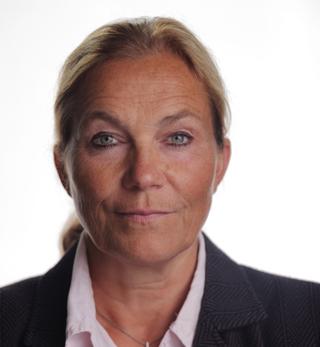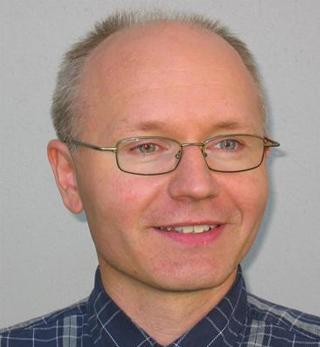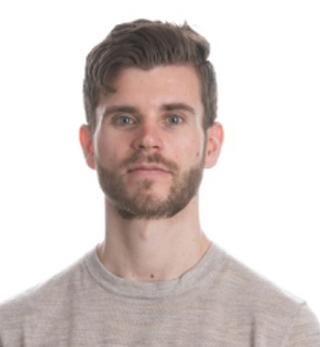Sustainable Ocean
10.30-12.00 Sustainable Ocean
Map Maritime Robotics, Trondheim
Map Powerhouse | Powerhouse | The Norwegian Centre for Plankton Technology
The Dutch royal couple is accompanied by His Royal Highness Crown Prince Haakon to Trondheim, with a program dedicated to technology, research and business cooperation. The day begins on Brattørkaia, where SINTEF and NTNU will highlight the opportunities that lie in ocean research
NTNU students and researchers will also show examples of ocean-related research and education. The royals will be presented with the research vessel Gunnerus, the autonomous ferry MilliAmpere2, various marine robots and other technology used to map the ocean space.
At the same time researchers from NTNU and universities in the Netherlands hold workshops on sustainable seas, food from the sea and marine minerals, respectively
Background
Powerhouse
The Powerhouse office building is the northernmost 'energy positive' building in the world. Over the entire lifespan of the Powerhouse, the building generates much more energy than it consumes by means of solar panels (including production of building materials, construction and demolition). Powerhouse is currently working on the development of a 'mini-grid' for the energy supply to the surrounding district.
SeeSalmon is a modern high-tech visitor centre with exhibits which gives the visitor a research-based knowledge. The NTNU University Museum has editorial responsibility for the exhibition. SeeSalmon acts as a teaching and learning arena since 2020. At SeeSalmon pupils are challenged with concrete examples and methods within sustainable development of aquaculture, as well as practical problem solving. Today students from a Trondheim based high school are here to acquire practical experience with a variety of exploratory research activities.
Sustainable Ocean
The Netherlands and Norway have had a close relationship for centuries, with each other and with the body of water that connects them: the North Sea. For centuries Norway and the Netherlands have been major trading partners. The Netherlands and Norway would like to work together to manage and use our seas and oceans sustainably, for example within the framework of the UN Decade of Ocean Science for Sustainable Development from 2021 to 2030. In order to maintain our prosperity and safeguard a livable world for future generations, Norway and the Netherlands focus on fostering innovative and inclusive solutions to sustainable ocean management. Both the Netherlands and Norway are the home to reputable knowledge institutions and innovative companies, which focus on technology, aquaculture and energy systems.
NTNU Oceans addresses complex challenges of great importance for society through interdisciplinary cooperation. Through its research NTNU Oceans contributes to Norway’s role as a maritime nation. SINTEF Ocean conducts research and innovation related to the ocean space for national and international industry. Their ambition is to continue Norway's leading position in marine engineering and biomarine research. SINTEF Ocean works closely with NTNU and co-owns advanced research infrastructure and laboratories.
The marine robots Eelume and Blueye are used within aquaculture, offshore wind, oil and gas, and maritime for inspection and repair of marine structures and offshore installations, in addition to conduct mapping and monitoring of the oceans to study the effect of increased sea temperatures, pollution, marine species population management and much more. The research vessel Gunnerus plays a central role in providing valuable field experience and data for students at all levels both in marine science and engineering at NTNU. The education and research done onboard the vessel is instrumental in bringing fundamental research and technology together across the disciplines.
Circular Economy
Holland Circular Hotspot (HCH) is a not for profit collaboration between the business community, knowledge institutions and governments and realizes coalitions of the willing that provide access to circular economy (CE) markets worldwide. The Nordic Circular Hotspot (NCH) was inspired by Holland Circular Hotspot when it was launched in 2019 during the World Circular Economy Forum in Helsinki, which means that the ties have been very close from the start. Both organizations would like to formalize the good cooperation they have had for years by signing a formal Partnership Agreement. The aim of the agreement is to organize more joint initiatives and events, to exchange knowledge and experience, and to further stimulate business opportunities and other partnerships between the Netherlands and the Nordic countries.
Sustainable Oceans

Alexandra Bech Gjørv
President & CEO at SINTEF
Introductions to sustainable ocean

Gunvor Øie
Research Director at SINTEF Ocean
Sealab
Maritime Robotics
Autonomouns Ship (milliAmpere II & AutoShip SFI)
Presented by Felix-Marcel Petermann & Emil Marten
The milliAmpere2 is NTNU’s and the world’s first fully automated passenger ferry.
Researchers at SFI AutoShip work on developing technologies for human-to-ship interaction to ensure safety during operations. This can only be done with access to real test platforms.
To monitor milliampere2 NTNU built a Shore Control Lab at Nyhavna, in Trondheim. The Shore Control Lab allows monitoring and controlling the milliAmpere2 using the digital twin of the vessel and its environment to test and simulate different operational scenarios.
Autonomous ships technology will play a key role in climate mitigation and adaptation actions. SFI AutoShip research and innovation objectives aim at contributing to a more rapid green shift in a traditional and very important industry for our Ocean.

Professor in Safe and Reliable Instrumentation systems
The importance of autonomy city development; development of the industry and for sustainable oceans

Egil Eide
Associate Professor, NTNU AutoShip - Autonomous Maritime Vehicles.
Design and verification milliAmpere I&II - 1st autonomous ferry

Ole Andreas Alsos
Associate Professor / Vice Dean for Innovation and Dissemination
Innovation, Nyhavna Control Room - The importance of autonomy city development; development of the industry and for sustainable oceans
Underwater hyperspectral imaging Ecotone
Presented by Aksel A. Mogstad and Marte O. Søreng.
Students will demonstrate how the technology provides us with a hyperspectral ocean vision, and therefore makes hidden information available.
The technology is essential for mapping the seafloor and increase our knowledge and understanding of marine life. Among other things, the students on the stand have used the technology to detect changes in seagrass meadows, study the magnificent cold-water coral reefs in the Trondheim fjord and also the historical shipwreck Figaro in the High Arctic.
Underwater Hyperspectral Imaging is the result of the pioneering work by NTNU professor Geir Johnsen, the supervisor of the two students at the stand. The technology is developed further in the NTNU spin-off company Ecotone.

marteoso@stud.ntnu.no
Marte is working on her master thesis involving the use of an Unmanned Surface Vehicle (USV) and Underwater Hyperspectral Imaging (UHI) to map seagrass meadows in the sublittoral zone. The goal is to map the macroalgae composition in the seagrass meadow and hopefully use this to detect growth changes in turf algae for conservational purposes.

aksel.a.mogstad@ntnu.no
Recently finished his PhD at NTN. Aksel has very recently finished his PhD at NTNU. In his research, he has studied how underwater hyperspectral imaging (UHI) can be used to map the seafloor and increase our knowledge and understanding of marine life. Among other things, he has used the technology to study the magnificent cold-water coral reefs in the Trondheim fjord and the historical shipwreck Figaro in the High Arctic.

Professor in marine biology at the Department of Biology and at the Centre for Autonomous Marie Operations
and Systems, and Professor II in arctic marine biology at the Universty at Svalbard
Marine robot Eelume for Ocean Mapping & Monitoring
Presenting: Marianna Wrzos-Kaminska, Erlend Basso
The marine snakerobot Eelume is developed based on research at NTNU, and gives access to confined spaces not accessible by conventional underwater vehicles.
It can be used for mapping and monitoring of the oceans, and make subsea operations - like inspection and repair of marine structures greener, safer and less costly.
It is an example of how bioinspired design is part of the next generation robot technology, and of research-based innovation.

Kristin Y. Pettersen (1969) is a Professor at the Department of Engineering Cybernetics. She has a PhD and an MSc in Engineering Cybernetics from NTNU.

PhD Topic: Motion Planning and Control of Articulated Intervention-AUVs

Martin Ludvigsen
martin.ludvigsen@ntnu.no
Professor. Manager of the Applied Underwater Laboratory (AUR-Lab) at the Department of Marine Technology NTNU
His students has DEMO / Stand at Maritime Robotics

Professor. Director of the Centre for Autonomous Marie Operations
His students has DEMO / Stand at Maritime Robotics
Sustainable Oceans
- NTNU Oceans
- SINTEF Ocean



